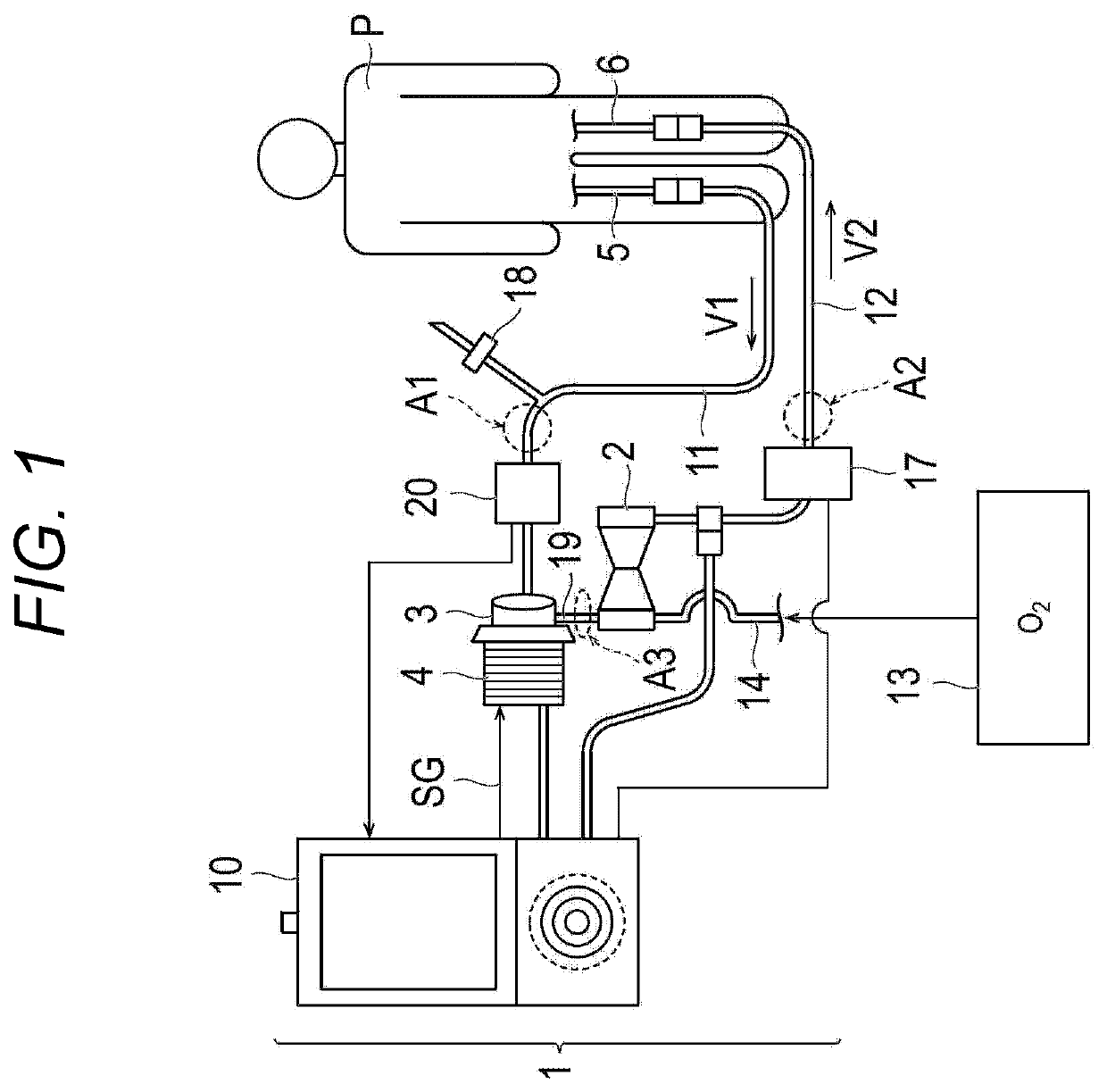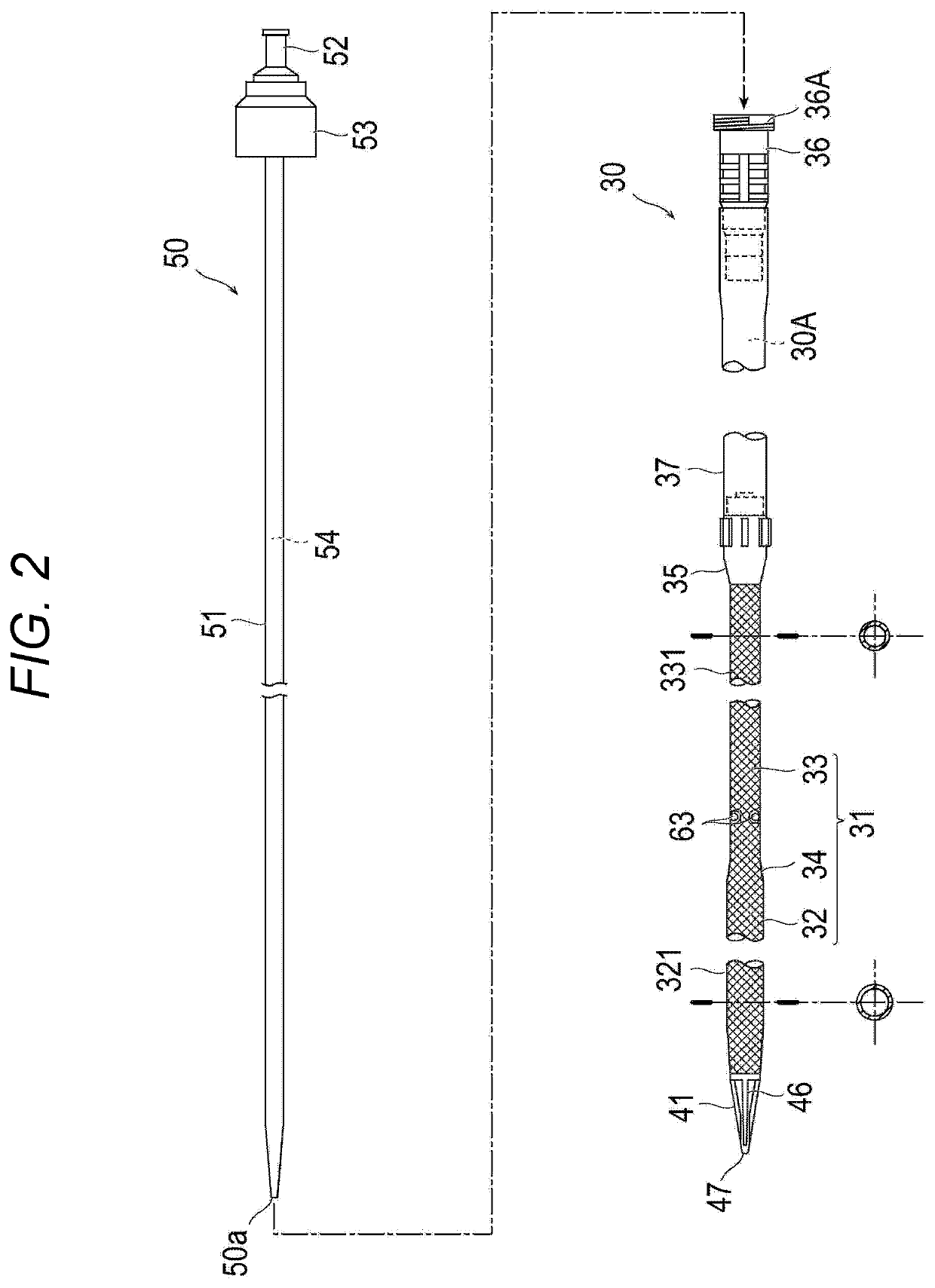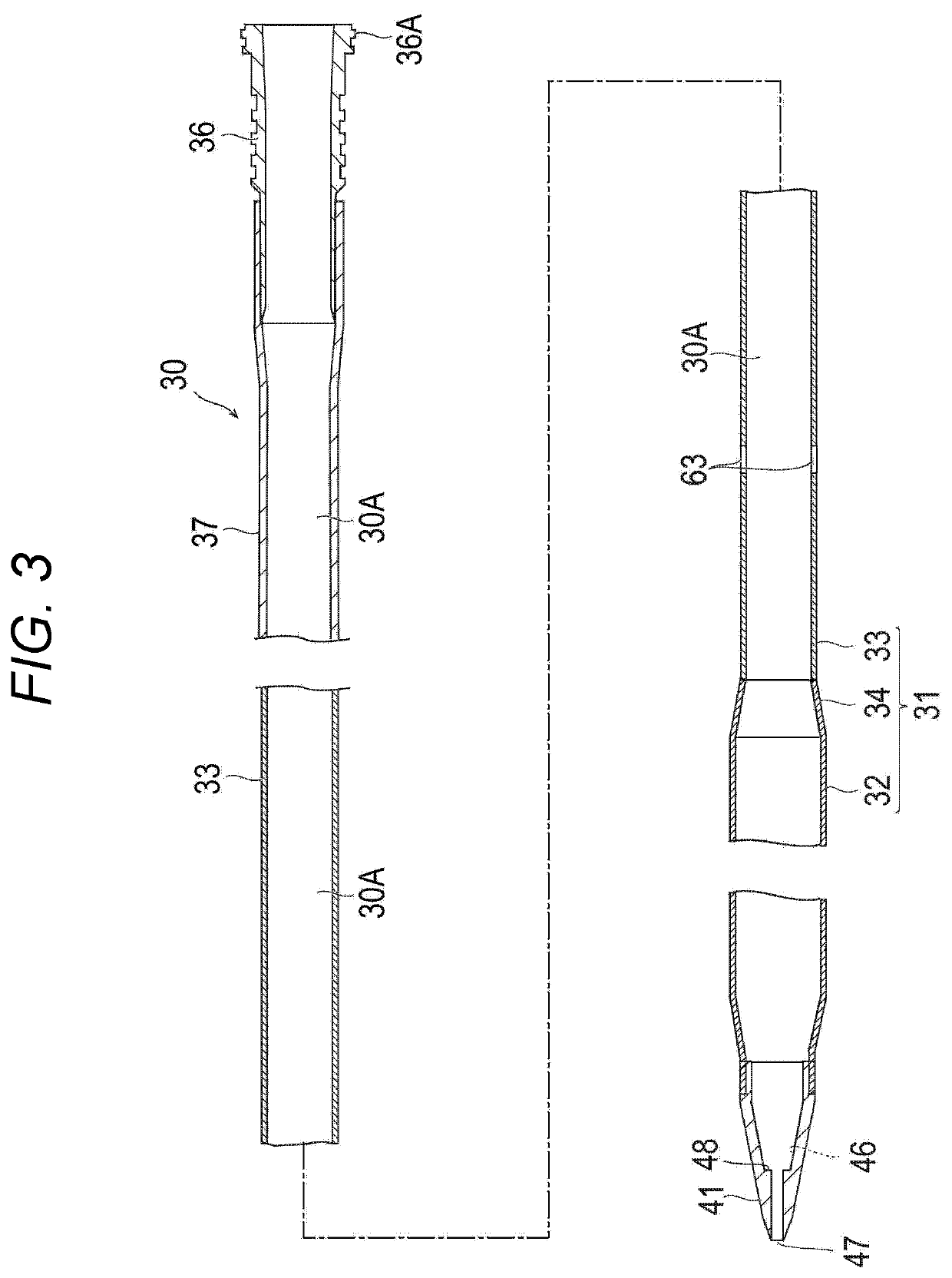Percutaneous catheter
a catheter and percutaneous technology, applied in the direction of multi-lumen catheters, catheters, blood pumps, etc., can solve the problems of increased pressure loss, decreased flow rate through the circulation circuit, and inability to obtain the required circulating amount of blood, so as to reduce the pressure loss in the expansion portion, and suppress the burden on the patient's body
- Summary
- Abstract
- Description
- Claims
- Application Information
AI Technical Summary
Benefits of technology
Problems solved by technology
Method used
Image
Examples
second embodiment
[0114]A percutaneous catheter (hereinafter, referred to as “catheter”) 60 according to a second embodiment of the present invention will be described with reference to FIGS. 10 to 12. FIGS. 10 to 12 are views for explaining a configuration of the catheter 60 according to the second embodiment.
[0115]The catheter 60 is a so-called double lumen catheter, and can simultaneously perform both blood supply and blood removal. Consequently, in the present embodiment, a procedure is performed using only one catheter 60 without using two catheters of a venous side catheter (catheter for blood removal) 5 and an arterial side catheter (catheter for blood supply) 6 in the extracorporeal circulation device of FIG. 1.
[0116]As illustrated in FIGS. 10 and 11, the catheter 60 according to the second embodiment is different from the catheter 30 according to the first embodiment in that a third tube 161 including a first lumen 61 communicating with a blood supply side hole 163 has a double tube structur...
PUM
 Login to View More
Login to View More Abstract
Description
Claims
Application Information
 Login to View More
Login to View More - R&D
- Intellectual Property
- Life Sciences
- Materials
- Tech Scout
- Unparalleled Data Quality
- Higher Quality Content
- 60% Fewer Hallucinations
Browse by: Latest US Patents, China's latest patents, Technical Efficacy Thesaurus, Application Domain, Technology Topic, Popular Technical Reports.
© 2025 PatSnap. All rights reserved.Legal|Privacy policy|Modern Slavery Act Transparency Statement|Sitemap|About US| Contact US: help@patsnap.com



